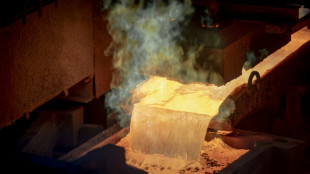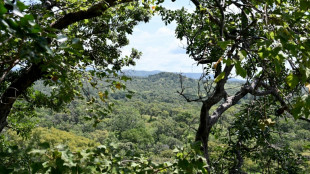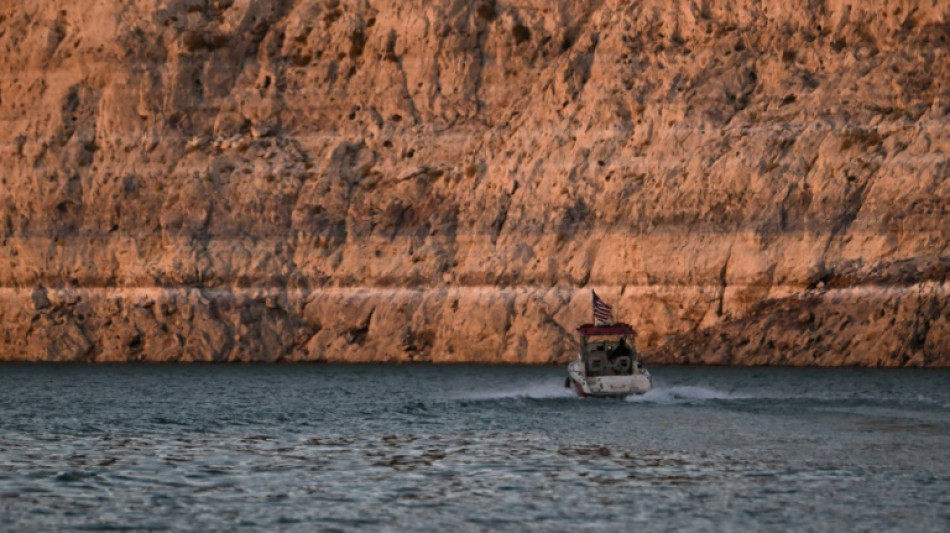
-
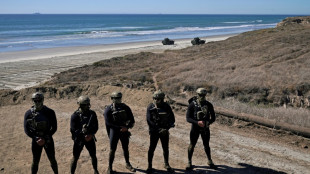 US Navy veterans battle PTSD with psychedelics
US Navy veterans battle PTSD with psychedelics
-
'Unheard of': Dodgers in awe of iron man Yamamoto

-
 UK police probe mass train stabbing that wounded 10
UK police probe mass train stabbing that wounded 10
-
'It's hard' - Jays manager Schneider rues missed chances in World Series defeat

-
 Women's cricket set for new champion as India, South Africa clash
Women's cricket set for new champion as India, South Africa clash
-
Messi scores but Miami lose as Nashville level MLS Cup playoff series

-
 Dodgers clinch back-to-back World Series as Blue Jays downed in thriller
Dodgers clinch back-to-back World Series as Blue Jays downed in thriller
-
Vietnam flood death toll rises to 35: disaster agency
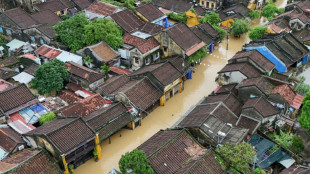
-
 History-making Japan golf twins push each other to greater heights
History-making Japan golf twins push each other to greater heights
-
Death becomes a growing business in ageing, lonely South Korea
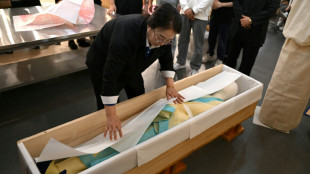
-
 India's cloud seeding trials 'costly spectacle'
India's cloud seeding trials 'costly spectacle'
-
Chiba wins women's title, Malinin leads at Skate Canada

-
 Siakam sparks injury-hit Pacers to season's first NBA win
Siakam sparks injury-hit Pacers to season's first NBA win
-
Denmark's fabled restaurant noma sells products to amateur cooks

-
 UK train stabbing wounds 10, two suspects arrested
UK train stabbing wounds 10, two suspects arrested
-
Nashville top Messi's Miami 2-1 to level MLS Cup playoff series

-
 Fergie, her daughters and the corgis hit by Andrew crisis
Fergie, her daughters and the corgis hit by Andrew crisis
-
'I can't eat': Millions risk losing food aid during US shutdown

-
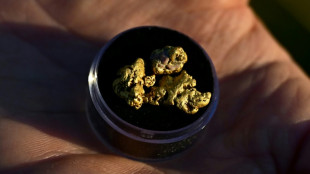 High price of gold inspires new rush in California
High price of gold inspires new rush in California
-
'Swing for the fences': Carney promises bold budget as US threat grows

-
 UK police arrest two after 'multiple people' stabbed on train
UK police arrest two after 'multiple people' stabbed on train
-
NBA Hawks lose guard Young for four weeks with knee sprain

-
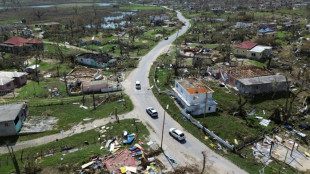 50 dead as Caribbean digs out from Hurricane Melissa
50 dead as Caribbean digs out from Hurricane Melissa
-
Forever Young gives Japan first Breeders' Cup Classic triumph

-
 Mbappe's Real Madrid extend Liga lead, Villarreal move second
Mbappe's Real Madrid extend Liga lead, Villarreal move second
-
Salah savours 'great feeling' after 250th Liverpool goal

-
 Ethical Diamond surges to upset win in $5 million Breeders' Cup Turf
Ethical Diamond surges to upset win in $5 million Breeders' Cup Turf
-
Kinghorn kicks Toulouse to Top 14 summit

-
 Mbappe extends Real Madrid's Liga lead in Valencia rout
Mbappe extends Real Madrid's Liga lead in Valencia rout
-
All Blacks sink 14-man Ireland 26-13 in Chicago Test

-
 World champ Malinin takes lead at Skate Canada
World champ Malinin takes lead at Skate Canada
-
Liverpool snap losing streak as Salah hits 250 goals in Villa win

-
 Salah's 250th Liverpool goal sinks Villa as Arsenal cruise at Burnley
Salah's 250th Liverpool goal sinks Villa as Arsenal cruise at Burnley
-
Morant suspended by Grizzlies after rebuking coaching staff

-
 Spalletti begins Juve tenure with win at Cremonese but Napoli held
Spalletti begins Juve tenure with win at Cremonese but Napoli held
-
Frank refuses to condemn Van de Ven, Spence for snub in Spurs defeat

-
 France superstar Dupont extends Toulouse deal
France superstar Dupont extends Toulouse deal
-
Egypt officially opens grand museum near pyramids

-
 French fraud watchdog reports Shein for 'childlike' sex dolls
French fraud watchdog reports Shein for 'childlike' sex dolls
-
Scotland thrash USA before All Blacks' clash

-
 Five things to know about the Grand Egyptian Museum
Five things to know about the Grand Egyptian Museum
-
Bayern rest stars but ease past Leverkusen before PSG clash

-
 Dead quiet: Paris Catacombs close for renovations
Dead quiet: Paris Catacombs close for renovations
-
Families separated, children killed as survivors flee Sudan's 'apocalyptic' El-Fasher

-
 Napoli held by Como as Spalletti begins Juve adventure
Napoli held by Como as Spalletti begins Juve adventure
-
Southampton boss Still vows to fight on as pressure mounts

-
 Borthwick hails 'ball of energy' Pollock as England down Australia
Borthwick hails 'ball of energy' Pollock as England down Australia
-
Egypt opens grand museum in lavish, pharaonic ceremony

-
 Joao Pedro strikes at last as Chelsea edge past Spurs
Joao Pedro strikes at last as Chelsea edge past Spurs
-
Ohtani to open for Dodgers in World Series deciding game seven


Deadpool: US mega drought spells trouble at Hoover Dam
Millions of gallons of Colorado River water hurtle through the Hoover Dam every day, generating electricity for hundreds of thousands of homes.
But the mega drought affecting the western United States is sending reservoir levels plummeting towards deadpool -- the point at which the dam can no longer produce power.
"We are 23rd year of drought here in the Colorado River Basin and Lake Mead has dropped down to 28 percent," explains Patti Aaron of the US Bureau of Reclamation, which operates the dam. She was referring to the vast lake created by the building of the dam.
"There isn't as much head so there isn't as much pressure pushing the water into the turbines, so there's less efficiency and we aren't able to produce as much power."
Hoover Dam was a feat of American hope and engineering.
Construction began in 1931 as the country was withering under the Great Depression.
Thousands of workers toiled 24 hours a day to build what was then the largest hydroelectricity facility in the world.
The dam stopped up the Colorado River, creating Lake Mead, the biggest reservoir in the United States.
At its height, the lake surface sits over 1,200 feet (365 meters) above sea level. But after more than two decades of drought it is now less than 1,050 feet -- the lowest since the lake was filled, and falling about a foot a week.
If it drops to 950 feet, the intakes for the dam will no longer be under water and the turbines will stop.
"We're working very hard for that not to happen," said Aaron. "It's just not an option to not produce power or not deliver water."
- Melting snowpack -
The Colorado River rises in the Rocky Mountains and snakes its way through Colorado, Utah, Arizona, Nevada, California and northern Mexico, where it empties into the Gulf of California.
It is fed chiefly by the huge snowpack that gets dumped at high altitudes, melting slowly throughout the warmer months.
But reduced precipitation and the higher temperatures caused by humanity's unchecked burning of fossil fuels means less snow is falling, and what snow there is, is melting faster.
As a consequence, there is not as much in a river that supplies water to tens of millions of people and countless acres of farmland.
Boaters on Lake Mead, many of whom come from Las Vegas and its surrounding towns, say they are doing their part to protect supplies.
They point to the drought-tolerant landscapes they have installed instead of lawns, and the high percentage of indoor water that is recycled in desert towns.
"But you've got farmers in California growing almonds for export," said Kameron Wells, who lives in nearby Henderson, Nevada.
Householders in southern California have grumbled about the fate of their luscious lawns since being ordered to limit their outdoor watering to one or two days a week at the start of the summer.
But there, like in the desert periphery of Las Vegas, there is plenty of new construction, with huge houses being put up in the resort settlement of Lake Las Vegas.
And from the air, the vibrant green of dozens of golf courses mark an otherwise dust bowl landscape.
- 'Out of sight, out of mind' -
Climatologist Steph McAfee of the University of Nevada, Reno, says the US west has always been something of an improbability.
"The average precipitation in Las Vegas is something like four inches (10 centimeters) a year," she told AFP.
"And to make it possible to have cities like Las Vegas and Phoenix and Los Angeles we rely on water that falls in the mountains as snow in parts of the West that are obviously much, much wetter."
The last two decades of drought are not, McAfee says, actually that unusual in climatic terms, according to tree ring reconstructions.
But "what's going on now is that we're having a drought, and temperatures are much warmer and when temperatures are high, things dry out faster.
"That is a consequence of climate change... driven by human greenhouse gas emissions."
On Lake Mead, boat seller Jason Davis manoeuvers his craft towards Hoover Dam, where thousands of tonnes of concrete loom over the water in graceful modernist lines, and a ring of mineral deposits shows where the water level used to be.
For him, the lake is not just a battery for the huge generators in the dam, but a waterscape whose beauty and peacefulness are worth protecting.
"You know, people who haven't been here don't appreciate it," he says as a sunset rages in the desert sky above.
"It's like, out of sight, out of mind. Hey, we're using too much water.
"Well, if you if you haven't seen these rings, you don't quite comprehend.
"Hopefully it's not too late."
Ch.Kahalev--AMWN
